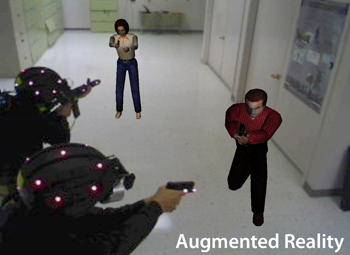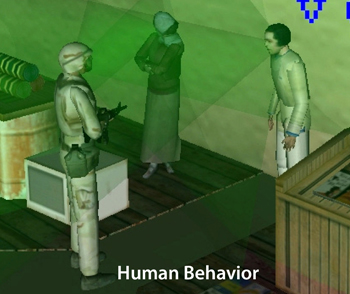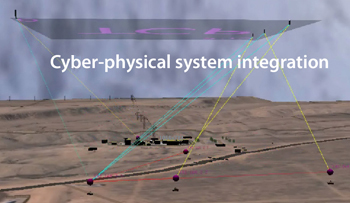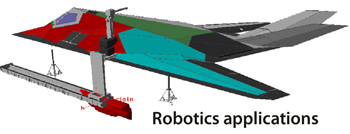
Umbra is a flexible simulation framework for complex systems that can be used by itself for modeling, simulation, and analysis, or to create specific applications. Attributes of Umbra include the following:
- Physical-cyber-behavior integration
- Framework integration for other simulations
- Tactical development (minutes-hours-days)
- DIS, HLA, TENA
- Live-Virtual-Constructive (LVC)
- Worlds Model (patented) simplifies adding entities to complex environments
- Capability to be operational on laptop, desktop, cluster
- System of Systems simulations
- C++, Tkl, version in Java
- Reuse of existing simulation components
- Capability to federate and co-simulate with other tools
- 2D, 3D, immersive visualizations
- Mixed, variable fidelity
- Training available
- Government Use, Academic/Commercial licensing
Umbra supports a large library of existing elements, is composable and modular, and supports reuse. A wealth of 3D geometric viewing and analysis capabilities exist. Umbra has been used to solve specific problems and to develop focused applications. Initial exploration of concepts in Umbra can often take only hours or days because of its ability to quickly decompose complex system problems into fundamental simulation constructs.
Umbra integrates well with other simulations directly or may communicate through interfaces, such as DIS (Distributed Interactive Simulation), HLA (High Level architecture), or TENA (Test and Training Enabling Architecture). It has also been used as a framework to integrate other simulations, hardware, and communications. Umbra supports time-stepped, discrete-event, and interrupt activity. It operates on Windows and Linux on laptops, or on desktops through a cluster environment. A Java-based core, or “Jumbra,” has also been developed.




One unique attribute of Umbra is a formal “Worlds abstraction” used to support modularization of any world model (US Patent No. 7,085,694). This is in contrast to many simulation environments, which rely upon a fixed set of data structures or a global variable space. Such approaches limit the practical scale and scope of problems to which these codes can be applied. Umbra uses world modules to provide realistic physical environments. Umbra also provides event order optimization.
Agents operate in various heterogeneous scenarios that include environment (terrains, weather, plumes, communications, etc.), objects (vehicles, devices, cyber-systems, etc.), sensed phenomena (magnetic, acoustic, seismic, radiation, etc.), behavior (state based, cognitive, etc.), or external simulations. These environments can co-exist in the same simulation environment and share data in a loosely coupled relationship. Due to Umbra’s modular Worlds abstraction, it is easy to combine models that use any or all of these Worlds into one functioning simulation.
Umbra can be licensed from Sandia and is available to U.S. Government activities free of
charge. As with many technologies, Umbra is export controlled. Additional technical and historical detail is available here.